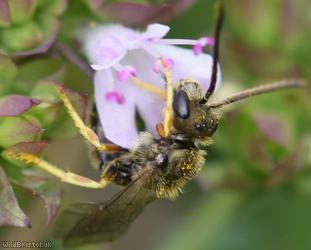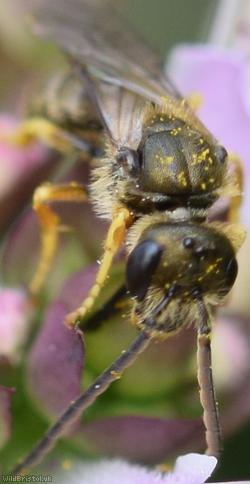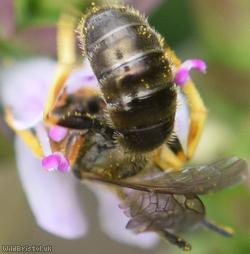Sharp-collared Furrow Bee - Lasioglossum malachurum
Favourite Photos
| image | species | author | location | uploaded | taken | select |
|---|---|---|---|---|---|---|
 |
Sharp-collared Furrow Bee - Lasioglossum malachurum | dylan | Blaise Castle | 6 Aug 2023, 9:53 p.m. | 3 Aug 2023, 2:46 p.m. | |
 |
Sharp-collared Furrow Bee - Lasioglossum malachurum | dylan | Blaise Castle | 6 Aug 2023, 9:53 p.m. | 3 Aug 2023, 2:46 p.m. | |
 |
Sharp-collared Furrow Bee - Lasioglossum malachurum | dylan | Blaise Castle | 6 Aug 2023, 9:53 p.m. | 3 Aug 2023, 2:46 p.m. |
Species Description
Widespread and locally common in the South. It was once considered a scarce southern species but it has shown a dramatic increase in abundance and distribution since 1990. Habitats include: Places with dry, clay-rich soils such as Coastal cliffs / land-slips, old quarries, commons, chalk grassland etc. Life story: A eusocial species which forms huge nesting aggregations with unusually large nest tumuli in thinly vegetated sites such as at the top of banks, hard trodden soil of footpaths. Diet: Nectar from Cinquefoils, Colt's-foot (Tussilago farfara), Common Fleabane (Pulicaria dysenterica), Creeping Thistle (Cirsium arvense), Dandelion (Taraxacum officinale), Fennel (Foeniculum vulgare), Field Bindweed (Convolvulus arvensis), Hawkweeds, Mayweeds, Oxtongue (Picris echioides), Stonecrops, Wild Parsnip (Pastinacea sativa) and Pollen from members of the Apiaceae, Asteraceae, Brassicaceae, Campanulaceae, Caryophyllaceae, Convolvulaceae, Fabaceae, Geraniaceae, Lamiaceae, Ranunculaceae, Rosaceae, Salicaceae families. Parasites: Sphecodes monilicornis, Oil Beetle (Meloe proscarabaeus). Flight period: Females = early April to October (Gynes may be recorded earlier on warm sunny days such as from mid-February off the Dorset Coast), Males = early July to early October.